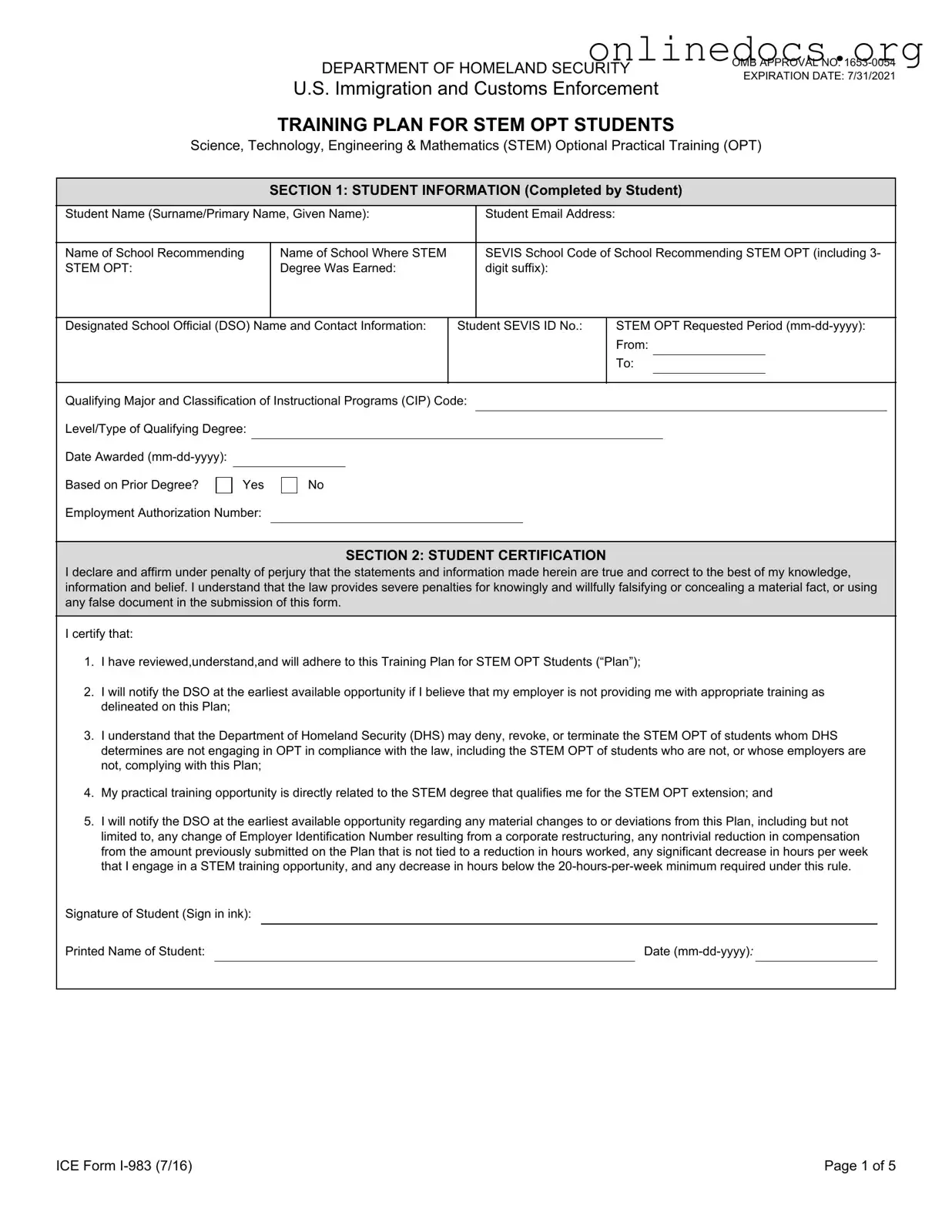The ICE I-983 form, which is used for the STEM OPT extension, shares similarities with the Form I-20, issued by Student and Exchange Visitor Program (SEVP) approved schools. Both documents serve as essential components in maintaining a student’s legal status in the United States. The Form I-20 outlines the student’s program of study and eligibility for the OPT, while the I-983 focuses on the training plan that the student will undertake during their employment. Together, these forms ensure that the student remains compliant with immigration regulations while pursuing practical training in their field of study.
In addition to the I-983 form, the importance of the California Employment Verification form cannot be overstated, as it serves as a vital resource for confirming employment status and related details. This document is essential for various administrative processes, particularly when navigating legal requirements or securing opportunities that necessitate proof of employment. For those looking for more comprehensive information about such verification forms, resources like legalformspdf.com can provide valuable insights.
Another document akin to the I-983 is the Form I-765, Application for Employment Authorization. This form is crucial for students seeking permission to work in the U.S. during their OPT period. While the I-983 details the training plan and employer responsibilities, the I-765 formally requests work authorization from U.S. Citizenship and Immigration Services (USCIS). Both forms must be submitted as part of the STEM OPT application process, ensuring that students have a structured plan for their employment while also obtaining the necessary legal permission to work.
The Form DS-2019, which is used for J-1 exchange visitors, is another document that bears similarities to the I-983. Like the I-983, the DS-2019 outlines the purpose of the exchange program and details the participant's training or research plan. Both forms require the endorsement of a designated school official or program sponsor, emphasizing the importance of oversight in maintaining the participant's legal status. They both serve to clarify the objectives of the training or research experience in the U.S., ensuring compliance with program requirements.
Additionally, the Form I-9, Employment Eligibility Verification, is relevant in this context. While the I-983 focuses on the training plan, the I-9 is used by employers to verify the identity and employment authorization of individuals hired in the U.S. Both documents are vital for ensuring that employment practices comply with federal regulations. The I-983 ensures that the training aligns with the student’s academic background, while the I-9 confirms that the student is legally permitted to work in the country.
The Labor Condition Application (LCA) is another document that shares similarities with the I-983. Filed by employers seeking to hire foreign workers, the LCA ensures that the employment conditions meet specific labor standards. While the I-983 provides a detailed plan for the student’s training and experience, the LCA addresses wage and working conditions. Both documents aim to protect the rights of foreign workers and ensure that their employment does not adversely affect the labor market.
The Form G-28, Notice of Entry of Appearance as Attorney or Accredited Representative, also has a connection to the I-983. While the I-983 outlines the training plan for a student, the G-28 is used by legal representatives to communicate with USCIS on behalf of the applicant. Both documents play a role in the immigration process, ensuring that students can receive guidance and support throughout their application for the STEM OPT extension.
Finally, the Form I-94, Arrival/Departure Record, is a critical document that relates to the I-983. The I-94 records a non-citizen's arrival and departure from the U.S., serving as proof of legal entry. While the I-983 provides a framework for the student’s training during their stay, the I-94 confirms their legal status in the country. Both documents are essential for maintaining compliance with U.S. immigration laws and ensuring that students can pursue their educational and professional goals without interruption.
